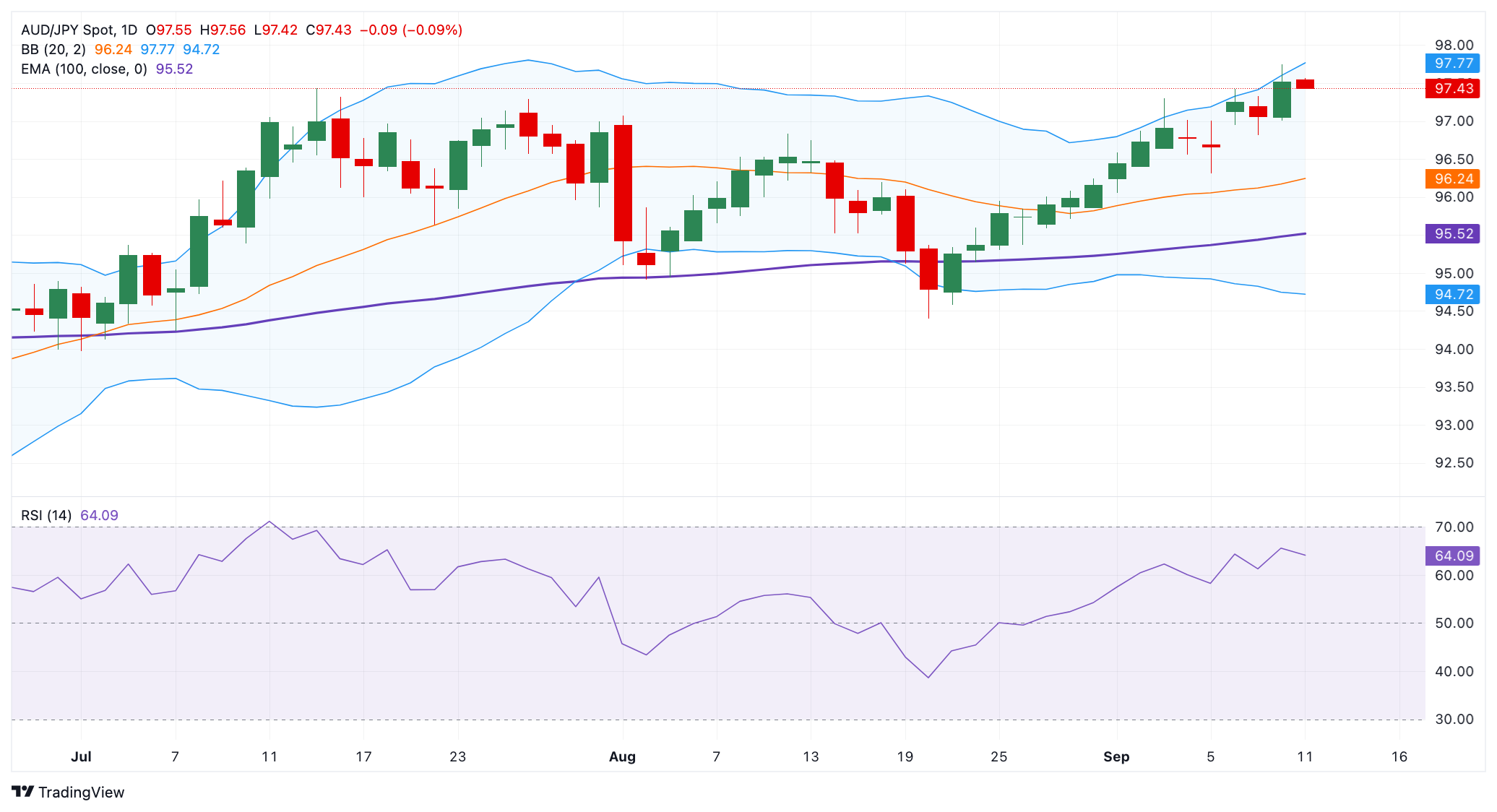AUD/JPY Price Forecast: Bullish tone remains intact near 97.50

- AUD/JPY weakens around 97.45 in Thursday’s early European session.
- The positive outlook of the cross prevails above the 100-day EMA, with bullish momentum in the near term.
- The first upside target is seen at 97.75; the initial support level is located at 96.82.
The AUD/JPY cross loses ground to near 97.45 during the early European session on Thursday. The upbeat Japanese economic data, including the Reuters Tankan poll and revised Gross Domestic Product (GDP), keep the door open for an imminent Bank of Japan (BoJ) interest rate hike by the year-end. This, in turn, provides some support to the Japanese Yen (JPY) and acts as a headwind for the cross.
Technically, the constructive outlook of the cross remains in play, with the price holding above the key 100-day Exponential Moving Average (EMA) on the daily chart. The path of least resistance is to the upside, as the 14-day Relative Strength Index (RSI) stands above the midline near 64.60. This indicates bullish momentum in the near term.
The key resistance level for AUD/JPY emerges at 97.75, representing the upper boundary of the Bollinger Band and the high of September 10. A run of green candles and steady trading above the mentioned level could open the door for a move toward 98.45, the high of January 27. The next hurdle is seen at 99.00, a round mark.
On the flip side, if the cross draws in sellers and more red candlesticks show up, the price could head right back to 96.82, the low of September 9. Sustained trading below this level could expose 95.86, the low of August 29. The next contention level is located at 95.52, the 100-day EMA.
AUD/JPY Daily Chart

Japanese Yen FAQs
The Japanese Yen (JPY) is one of the world’s most traded currencies. Its value is broadly determined by the performance of the Japanese economy, but more specifically by the Bank of Japan’s policy, the differential between Japanese and US bond yields, or risk sentiment among traders, among other factors.
One of the Bank of Japan’s mandates is currency control, so its moves are key for the Yen. The BoJ has directly intervened in currency markets sometimes, generally to lower the value of the Yen, although it refrains from doing it often due to political concerns of its main trading partners. The BoJ ultra-loose monetary policy between 2013 and 2024 caused the Yen to depreciate against its main currency peers due to an increasing policy divergence between the Bank of Japan and other main central banks. More recently, the gradually unwinding of this ultra-loose policy has given some support to the Yen.
Over the last decade, the BoJ’s stance of sticking to ultra-loose monetary policy has led to a widening policy divergence with other central banks, particularly with the US Federal Reserve. This supported a widening of the differential between the 10-year US and Japanese bonds, which favored the US Dollar against the Japanese Yen. The BoJ decision in 2024 to gradually abandon the ultra-loose policy, coupled with interest-rate cuts in other major central banks, is narrowing this differential.
The Japanese Yen is often seen as a safe-haven investment. This means that in times of market stress, investors are more likely to put their money in the Japanese currency due to its supposed reliability and stability. Turbulent times are likely to strengthen the Yen’s value against other currencies seen as more risky to invest in.







